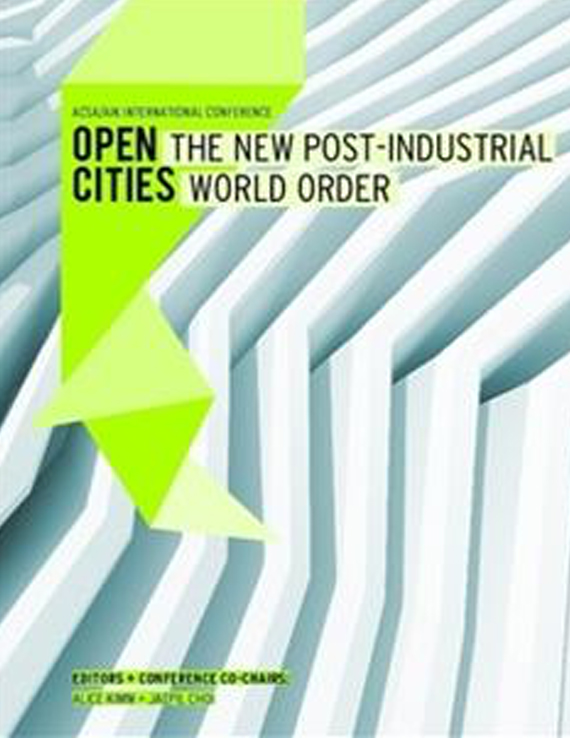Author(s): Seung K. Ra
The concrete fallout of mid-century industrial progress is now nothing more thanossified infrastructure consuming the American city. Euclidean zoning, the agentof this movement, brought about single-use land subdivisions that encouraged excessivetransportation channels to connect their disparate functions. For decades,zoning codes and highway corridors outlined scaleless tensions that engineeredurban socioeconomic partitions and mobility dispositions. Oklahoma City offersa cityscape accessible for design scrutiny: its broad array of city center surfaceparking lots, substantial presence of brownfields, and recent realignment of thedowntown I-40 corridor have resulted in a conspicuously unoccupied central businessdistrict. The city’s ambitious “Core to Shore” plan proposes a redevelopmentof 3,000 new housing units apportioned along one mile of mixed-use spaces connectingdowntown with the man-made Oklahoma River to the south. UtilizingOklahoma City’s transition in this projected fifteen-year period as a case study, thispaper proposes the application of new soft infrastructural measures to safeguardthe Core to Shore program’s adaptability.Soft infrastructure is capacious; it has latent scalar responses that can adjust tothe human scale while still sustaining a “default redundancy” across the urbanspectrum. This necessary redundancy both safeguards a common blanketing ofinfrastructure and permits unique deviations for ad hoc community input. Studyingthe Core to Shore plan as a platform for soft infrastructure, three developmentstrategies emerge: open-data programming, participatory form-based codes, andperformance-based design metrics for culture. An open-data approach to programmingthe proposed “Boulevard”, the thoroughfare replacing the demolishedI-40 Crosstown Expressway Bridge, streamlines the measurements of mixed-usefunctions, office vacancies, and on-demand transit along this new downtown corridor.This cloud-based data system will render the Boulevard a forum for recordingconcurrent market/transit studies to sustain the city’s central business district.Likewise, open-source form-based codes empower the residents of the densetownhome West Park quadrangles and the live/work and workforce housing ofParkview to collaboratively define the current and future grain of the streetscape.Open-source form-based codes offer a participatory method to urban planning inwhich user-generated constraints will reference each neighborhood’s needs; initialstreet mapping will pass through the hands of prospective tenants. Extending theproject’s vision south to the shore of the Oklahoma River, soft infrastructure inthe form of cultural projects at Riverlake and Wiley Post Park are designed withperformance-based metrics to generate a feedback loop of public-cultural design.The city’s empirical assessment of personal and cultural interaction will sharpen itsperception of future global movements.These approaches to soft infrastructure contribute to sustainable and flexible environmentsthat can support adaptive reuse and responsible redevelopment in thefuture. While these potential strategies were applied and investigated in terms ofdevelopment for Oklahoma City, they were conceived to apply to future urban developmentin other cities around the globe. The concepts of openness, participation,feedback, and performance-based design, work together to enhance users’quality of life, connectedness to place, and cultural relevance for an open city anda global society.
Volume Editors
Alice Kimm & Jaepil Choi
ISBN
978-0-935502-91-6

 Study Architecture
Study Architecture  ProPEL
ProPEL 
